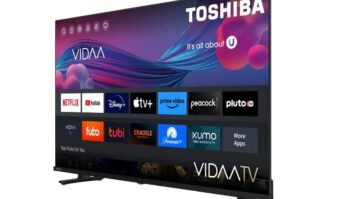Long Beach, Calif. — Pioneer’s decision this week to exit the television business came as no surprise to market analysts who’ve been watching sales of higher-end Kuro sets get crushed under the pressure of declining flat-panel TV prices and the sputtering economy.
“The brand was not doing well and was not gaining traction with consumers despite their superior quality, mainly because of their higher prices,” observed Riddhi Patel, iSuppli TV systems principal analyst.
Tamaryn Pratt, Quixel Research principal, agreed, and added that the impact on the market will be minimal from a dollars perspective.
“They weren’t selling an overwhelming amount of plasma — period,” she said. “Other manufacturers will have no problem picking up the slack. The biggest issue is the negative PR this and Vizio’s announcement to drop plasma puts on the plasma category that is getting beaten up by LCD.”
But Paul Gagnon, DisplaySearch’s North American TV research director, said “Pioneer’s exit will leave a big brand hole in the A/V specialty channel that will need to be filled by some brand that can provide some measure of shelter with a premium product.”
Overall, Patel of iSuppli said, “In the U.S. market, our consumer research findings show that consumers even in the highest income bracket are fairly price conscious.”
For June 2008, 60 percent of consumers in the $200,000-and-higher income bracket bought a flat-panel TV that was priced less than $1,500, according to Patel.
In contrast to that, in Dec 2008, almost 60 percent consumers in the same income bracket bought a TV that was less than $1,000.
“Now there could be some impact of the economy as well, but, overall, the trend is that if consumers perceive the picture quality of two sets at par, they tend to go with the lower-priced set.”
Retail prices for Pioneer/Kuro-branded plasma sets generally exceed $2,000 for 50-inch models, while Elite models are significantly higher.
“Pioneer accounted for a very small portion of the plasma TV market,” Patel said. “That business will go either to Panasonic or Samsung as these are the brands that have high value and attractive prices. Also, these brands have continued to innovate with the look and feel of the TV and have products that are competitively priced.”
Pioneer’s decision to exit TV came after the company announced last spring that it had stopped manufacturing its own plasma display panels in order to source the components from rival Panasonic.
Ironically, Pioneer said in its financial statement last year that it “believes that displays are indispensable to its product lineup … and will therefore maintain its fundamental strategy for the display business.”
Pioneer started selling LCD TVs in Europe and Japan. It also intended to introduce LCD sets in the U.S. using panels acquired through a capital business partnership with Sharp, which had become Pioneer’s largest shareholder after taking a 14.3 percent stake.
Pratt of Quixel said Pioneer “probably lacked the sheer dollars and cents” to pull the trigger on entering the LCD TV category in the United States, despite Sharp’s support.
“On the surface, it’s amazing to see how that investment [Sharp’s equity stake] has cratered,” Pratt said. “Now they say that it was done for longer-term strategic reasons, and they may make it up by sharing technology.”
As for plasma, until last year, Pioneer remained one of the world’s larger plasma panel manufacturers, at one time producing panels in the 42-, 50- and 60-inch screen sizes at plants in Kagoshima, Yamanashi and Shizuoka prefectures. Pioneer purchased the Kagoshima operation from NEC, when that company exited the business.
After shuttering the panel plants, Pioneer maintained a TV assembly center in Shinzuoka in Japan.
As for whether Pioneer’s decision will be a harbinger for similar announcements by other TV brands, Pratt of Quixel said she wouldn’t be surprised if some other companies “will be making changes soon” as well.













